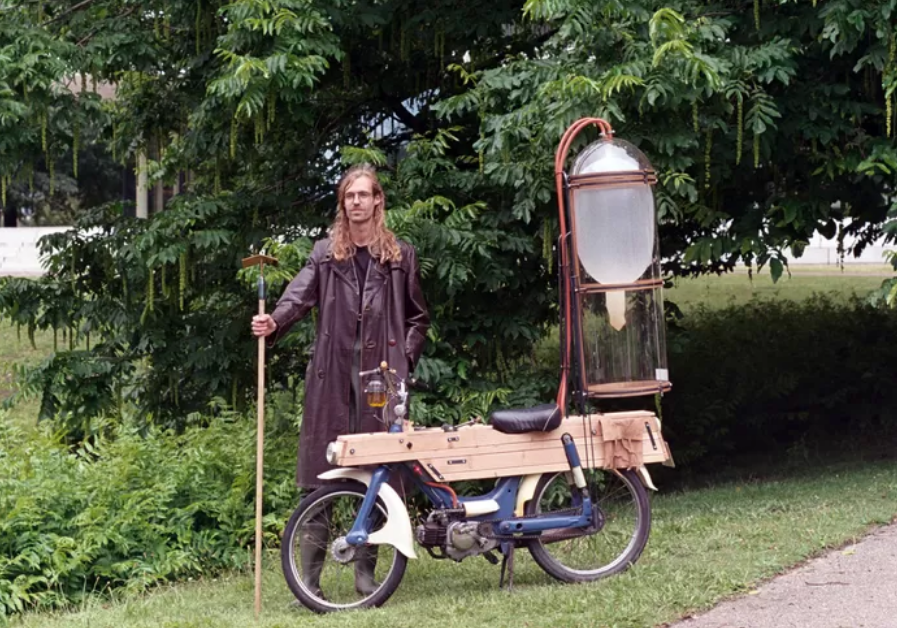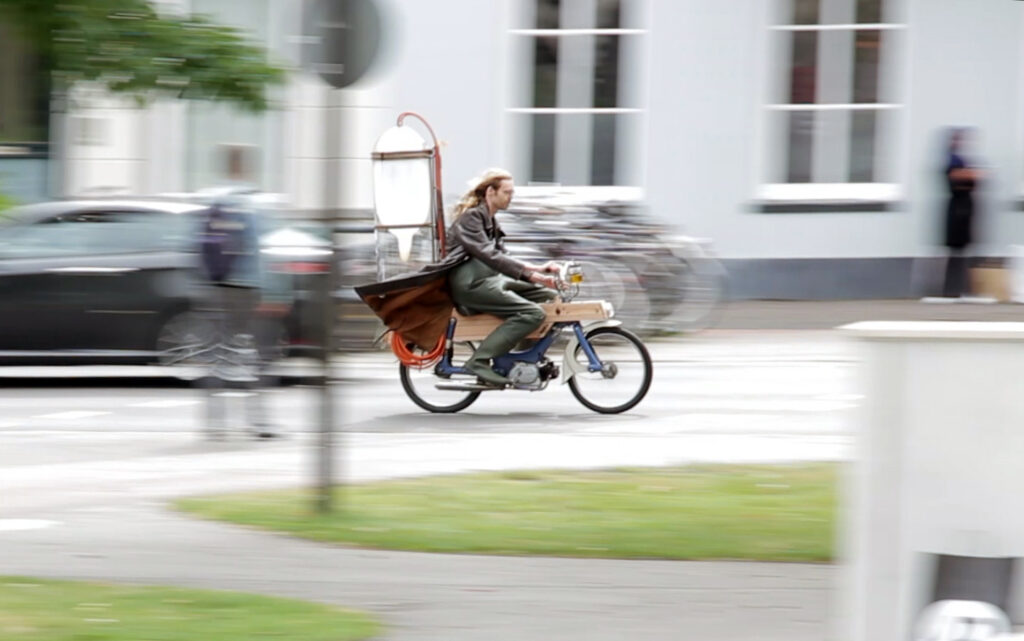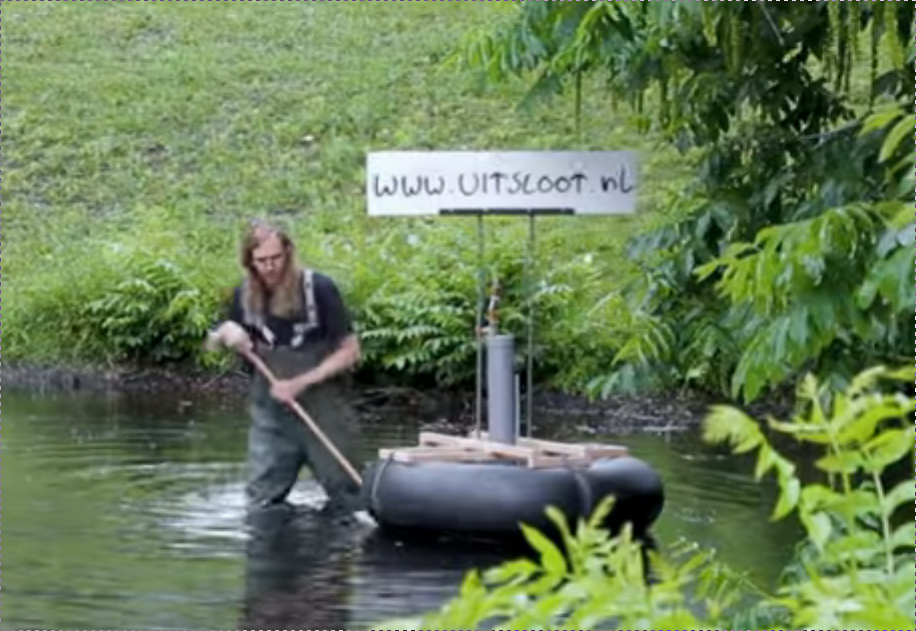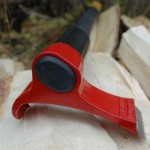Shallow ponds and ditches are producers of greenhouse gases, especially methane, which is released by the breakdown or decay of organic material. Gijs Schalkx harvests this methane from ponds — by hand — and uses it to power his moped. Eight hours of hoeing in a ditch supplies him with enough fuel to ride his vehicle for 20 km. He calls it “a quest on keeping the combustion engine alive in a fossil free future”.
* * *
Gijs Schalkx graduated with the project from the ArtEZ University of the Arts in Arnhem, the Netherlands. In an interview with Dutch newspaper Algemeen Dagblad, Schalkx explains that he likes to work on old motorcycles but “dislikes oil companies like Shell who promise all kinds of things about a better world, but don’t deliver”.
In a book, he came across a story of a fisherman who hung a special tank behind his boat to harvest methane from the water. When the fisherman got home, he was able to fry the fish he caught on the methane gas that he also caught himself. “I found that totally awesome and I set out to develop that idea. Why depend on big corporations and their promises to save the world when you can do it yourself?”.
He calls his contraption the “slootmotor”, which translates into “Ditch motorcycle”.
Refueling from the ditch
Harvesting methane from ditches and ponds is hard work, explains Schalkx: “Methane can rise to the surface spontaneously, but it works better to give it a hand by agitating the bottom of the pond. With an upturned, floating mortar tub, I catch the gas by hoeing underneath. The gas is then led through a hose into the reservoir of the engine, on the back of the motorcycle. I then pressurize the methane with an inverted bicycle pump. A special small petrol tank for the engine is still needed to start the engine.”
It takes the young Dutchman roughly eight hours to collect enough fuel to fill the tank and ride his moped for about 20 km. This is not comparable to the convenience of filling up a gasoline tank or charging an electric battery, but that is exactly the point. “Eight hours of hoeing for a twenty kilometer drive will ensure that it will be the best twenty kilometers of your life.”
The moped achieves a top speed of 43 km/h. According to Schalkx, riding his vehicle also helps the environment. “Capturing methane and using it emits CO2, but that is less bad for the environment than when that methane gas bubbles up and ends up in the environment anyway.”
More images, data and a video (which shows the whole process) can be found at his website. All images courtesy of Gijs Schalkx.
Thanks to Tim Joye.








